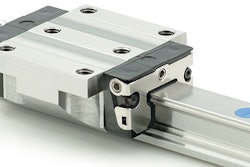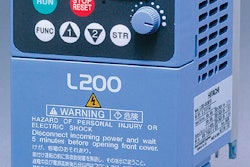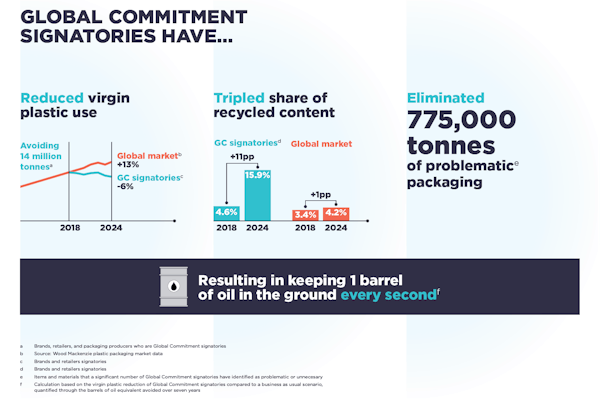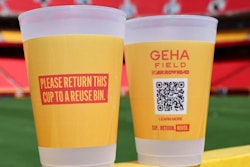At the heart of this particular controls solution is an Allen-Bradley ControLogix PLC from Rockwell Automation. Mounted in a control cabinet not far from the filler, it communicates with conveyors and packaging machine PLCs throughout the line via an Ethernet communications protocol.
“It controls all the variable-frequency drives on the conveyors,” says Old Orchard maintenance manager Rob LaLone. “Based on input it receives from sensors throughout the line, it calculates the output it needs to send to the variable frequency drives, which of course determines what speed they’ll run at.” Thus, in effect, it’s the ControLogix controller that keeps the many complex and disparate pieces of equipment on the line synchronized.
The best place to see this synchronization in action is the portion of the line from the filler to the cooler. At least six discrete devices—filler, capper, lay-down sterilizer, conveyor, cooler infeed, and cooler belts—all modulate their speed, based on inputs and outputs sent along the network, so that they all stay synchronized. If the filler speeds up or slows down, the filler/capper, lay-down sterilizer, conveyor, cooler infeed, and cooler belts all adjust their speed accordingly.
“This lets us populate every inch of the cooler conveyor belt,” says LaLone. “If the cooler ran at a constant speed independent of the upstream equipment, sometimes the belt would be full, sometimes not. That would not be an efficient use of energy.”
Even more complex from a controls standpoint is the lane divider that precedes the two case packers. The lane divider needs to choose how many bottles to send down each lane based on downstream conditions. If the infeed to case packer A needs bottles, a photocell signals that condition to the ControLogix controller, which then signals the lane diverter to send bottles down lane A.
“But,” says LaLone, “the lane divider also has to respond to signals from the vertical accumulator that’s immediately upstream. If that accumulator is full, the controller tells the lane divider that it must accelerate to draw all those bottles out. It’s a whole series of decisions that have to be made across the line, and they’re all made based on line conditions.”
See the story that goes with this sidebar: Redundancy rules at Old Orchard

























